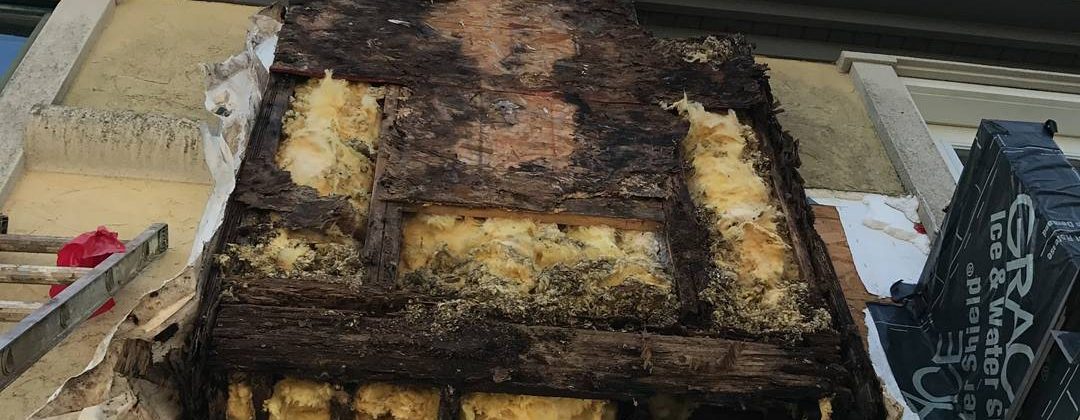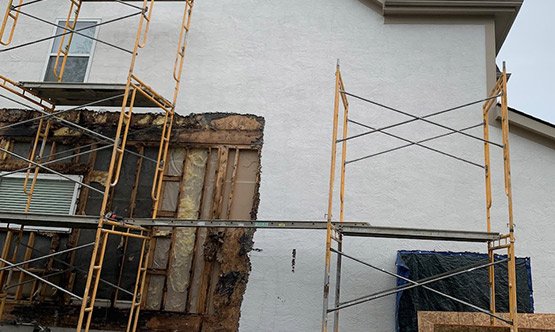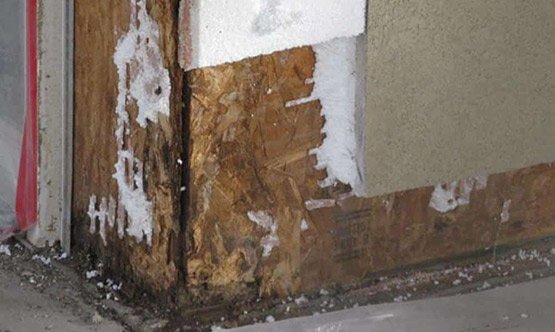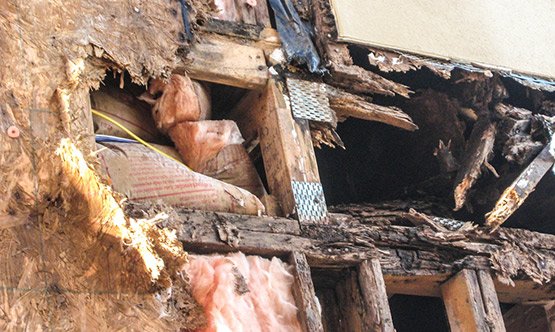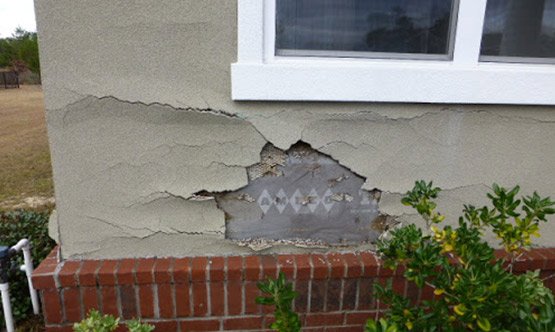Sometimes, even the toughest of stucco is no match for a very determined animal looking for food or shelter.
Termites have been known to munch on stucco, and squirrels are willing to eat away at your siding for the chance to create a nest in your walls. Woodpeckers are another big offender, known to often hammer away on stucco, leaving traces of little holes. Since they return to places annually, these birds can cause thousands of dollars’ worth of damage a year over year.
When looking for wildlife damage to your stucco, be sure to look for holes, big and small, or look for where your stucco has been torn away or no longer meets the ground evenly.
To ensure that your stucco stays safe from future wildlife damage, be sure to consult with your local wildlife or exterminator experts for options including installing physical deterrents, taste repellents, or removal in addition to having the appropriate repairs done.

